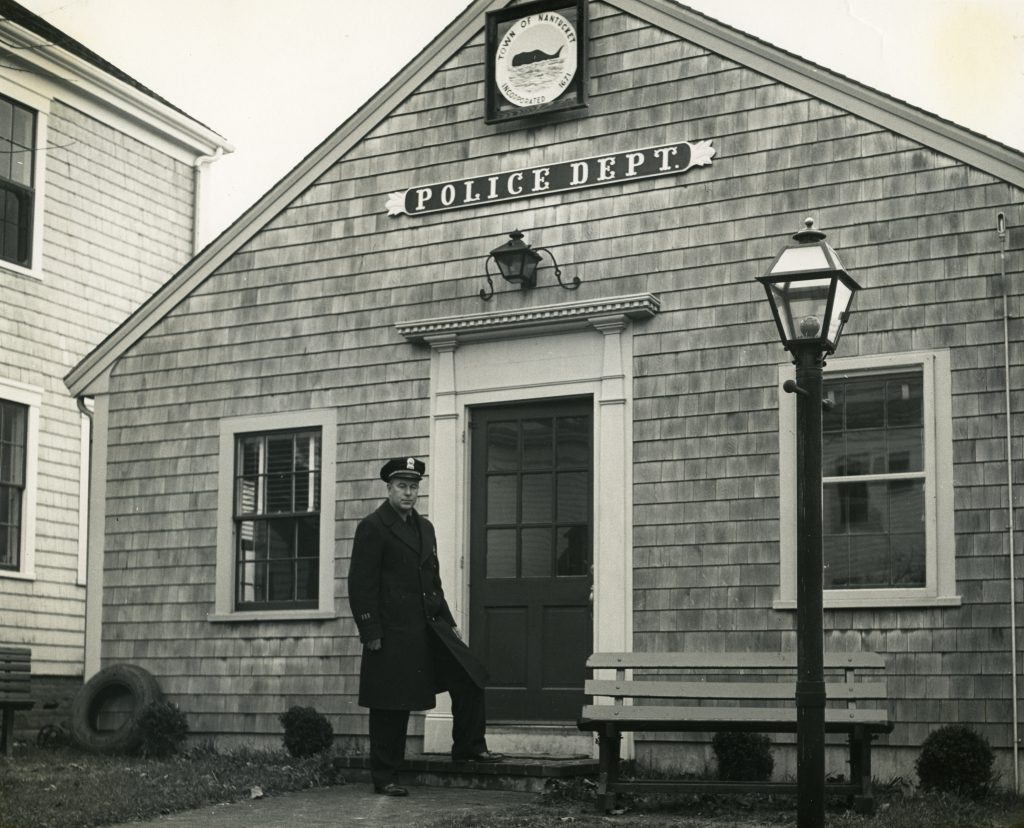Recently, the Historic District Commission approved the demolition of 3 East Chestnut Street. The building is currently home to the Nantucket Health Department, which will move to the former fire station on Pleasant Street. The building, which has suffered from deferred maintenance, will make room for space that will help improve circulation around the downtown Visitor Services Office and its public restrooms. Though the building will be demolished, we wanted to highlight the unique story of its construction, and a simpler time for building on Nantucket.
3 East Chestnut Street was originally constructed in the spring of 1953 by members of the seven-man Nantucket Police Department, including Chief of Police Wendell Howes, Sergeant Frederick S. Chadwick, and Patrolmen William J. Henderson, John E. Gibbs, Elwyn Francis, Jr., Roland G. Huyser, and Richard Barrett. The new police station was first occupied on June 24, 1953.

Prior to the move to East Chestnut Street, the police were headquartered in the Town offices on Washington Street. Chief Howes had originally requested space for the police in the visitor information bureau, but there was no room there to be had. Instead, Chief Howes sketched up designs for a new police building to be built next door. Nantucket summer resident MacMillan Clements of Clements Panel Company in Danbury, Connecticut took Chief Howes’ sketches and created blueprints. The Town appropriated $10,500 for the new station’s construction. Island contractor and deputy sheriff Paul Frye bid $9,000 on the job, and the remainder of the appropriation was spent on furniture and equipment. To keep the project under its tight budget, the police officers volunteered their time and labor in the construction. Furniture was made by inmates at MCI Concord.
To make room for the police station, and ell on an adjoining house was demolished, and a garage and a small shop were moved off the lot. The telephone company donated a pole, and when they saw the police officers volunteering, telephone company employees volunteered their labor in their off hours. Nantucket Selectmen George Burgess, Jr. and Kenneth N. Pease also volunteered to help in the construction.
Even at the time, people noted how unusual the volunteer effort was. The April 18, 1953 edition of The Inquirer and Mirror noted “nothing like this has occurred on Nantucket beyond the memory of the oldest citizen.”


